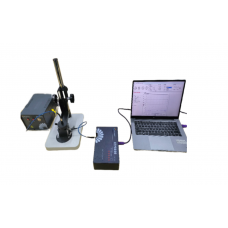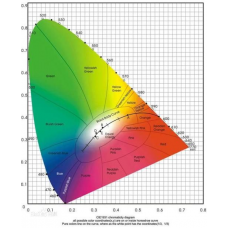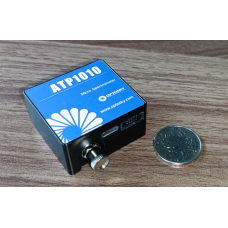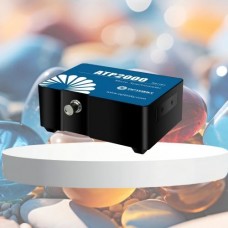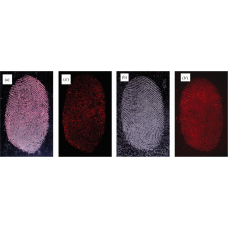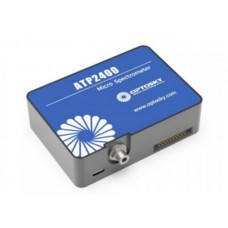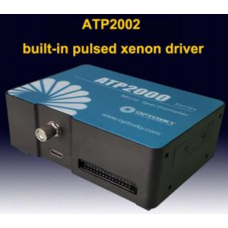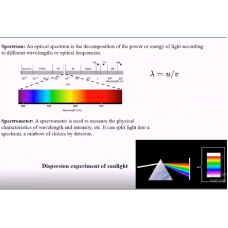- ATP2400, which has built-in pulsed xenon lamp drive circuits, adopts high sensitivity linear CMOS, and specially customized ultra-low noise CMOS signal processing circuits, which greatly reduces The noise of the sensor is lower, the signal-to-noise ratio is obtained (about twice higher than that of similar competitors), and the measurement reliability of the ATP2400 is improved. The measurement results do not change with the ambient temperature, which is the best level in the industry.
- ATP2400 can receive SMA905 fiber input light or free space light, and output spectral data measured through USB2.0 or UART ports.
- ATP2400 only requires a 5V DC power supply or USB power supply, which is very easy to integrate.
- ATP2400 is a self-designed spectrometer that employs higher performance and smaller size vs USB2000+
- ATP2400 has free SDK for customers self-developed, Optosky support C++, C#, Labview and Linux system SDK, which is very convenient for OEM customers to design solutions.
| Detector | |
| Detectable range | 180-1100 nm |
| Full scale range | ~200 ke- |
| Pixel dimension | 14μm×200μm |
| Type | Linear CMOS |
| Effective pixels | 2048×1 |
| Sensitivity | 1300 V/(lx•s) |
| Dark noise | 0.4 mV RMS |
| Optical parameter | |
| Optical resolution | 0.1-2 nm (Depends on slit, spectral range) |
| Incident Interface | SMA905 Optical fiber interface, free space |
| Dynamic range | 5000:1 |
| Working humidity | < 90%RH (No condensation) |
| Slit Size | 5、10、25、50、100、150、200 μm Optional, other sizes can be customized |
| SNR | >450: 1 |
| Optical Design | f/4 cross asymmetric C-T optical path |
| Electrical parameter | |
| A/D conversion resolution | 16 bit |
| Integration time | 0.1 ms - 256 second |
| Interface | USB 2.0 |
| Supply voltage | DC4.5 to 5.5 V (type @5V) |
| Operating current | 250mA@Typ. |
| Storage temperature | -30°C to +70°C |
| Operating temperature | -25-50°C |
- Ultra-small, ultra-thin, ultra-light;
- Detector: Linear CMOS
- Detector pixels: 2048 pixels
- Ultra-low noise CCD signal processing circuit
- Maximum spectral range: 190-1180 nm(Maximum width: 900 nm)
- Spectral resolution: 0.1-2 nm(Depends on spectral range and slit width)
- Optical path structure: cross C-T
- Built-in pulsed xenon lamp driver
- Integration time: 1ms-65s
- Power supply: DC 5V±10% or USB power supply
- 16bit, 2MHz ADC
- Optical input interface: SMA905 or free space
- Data output interface: USB2.0 (High speed) or RJ-45 interface
- 20-pin double-row external expansion interface
- Fast and ultra-micro spectrophotometer;
- Environmental protection equipment (flue gas, water quality);
- Reflection and transmission spectrum detection;
- Spectral analysis, radiation spectroscopic analysis, spectrophotometric analysis;
- Laser wavelength measurement.
What are Low Cost spectrometer from Optosky?
ATP1XXX & ATP2XXX belongs to low cost spectrometer.
ATP1000 350-1100nm, replace STS
ATP1010 180-1100nm, replace STS and UV enhanced
ATP1012 Xenon lamp driver built-in upgrade from ATP1010
ATP2000P 180-1100nm, higher performance than USB2000+
ATP2000H high speed rate up to 2K or 4K Hz
ATP2002 Xenon lamp driver built-in upgrade from ATP2000P
ATP2100 highest SNR, wave shape can be edited
ATP2110 Water quality analysis spectrometer
ATP2200 180-1100nm, compete with Flame
ATP2400 ultra thin, smaller than USB2000+ performance higher, replace USB2000+
How many topology structure of optical path for a spectrometer?
There are commonly divided into 4 types of optical path, including crossed C-T, M-shape C-T, concave grating optical path, transmittance grating opitcal path.
Crossed C-T: ATP2000P,ATP2002, ATP2400, ATP1010, ATP5020P, ATP5040, ATP6500
M-shape C-T: ATP3030, ATP3034, ATP3330/4 ATP5030, ATP5034, ATP5330/4
Concave grating: ATP4230, ATP4020, ATP4050, ATP4070
let's see the M-shape optical path looks like a number "3", so our models uses the 3rd number "3" to indicate M-shape optical path models.
In generally, topology structure can decide resolution, sensitivity, stray light, and size of a spectrometer.
Crossed C-T topology structure employs better sensitivity and compact size.
M-shape C-T employs higher resolution and better stray light.
Concave grating optical path employs high stray light.

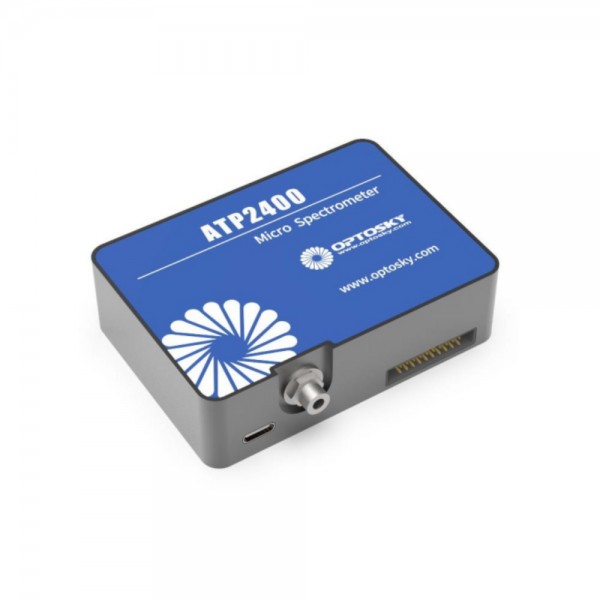








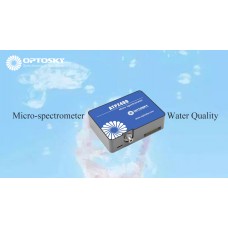
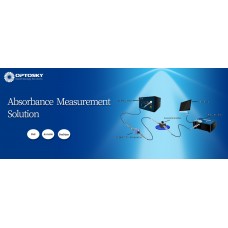
-228x228.png)
